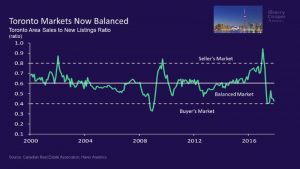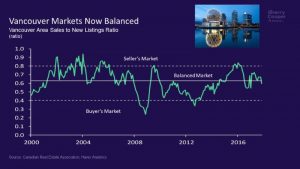4 Common Financial Mistakes Every Small Business Owner Should Avoid
 Every entrepreneur and business owner will make a few financial mistakes during their journey. Those who aren’t savvy in accounting often overlook the need to brush up on their financial IQ. Truth is, these little financial errors can lead to some serious cash flow problems if you aren’t careful. Here are four financial mistakes you can easily avoid so you can protect your bottom line.
Every entrepreneur and business owner will make a few financial mistakes during their journey. Those who aren’t savvy in accounting often overlook the need to brush up on their financial IQ. Truth is, these little financial errors can lead to some serious cash flow problems if you aren’t careful. Here are four financial mistakes you can easily avoid so you can protect your bottom line.
Late payments
Nobody is fond of paying bills. We tend to put them off until the last minute for short-lived peace of mind. This applies to all business owners when it comes to both your account payables and receivables.
When billing your clients, it’s common to give them an extended window of time to make payments so you can foster more sales. While your clients may appreciate the flexibility this can seriously cripple your cash flow. I generally suggest giving your clients no longer than 14 days to pay an invoice. If you’re providing quality goods and services they should have no problem paying you within this time window.
When it comes to paying your own bills, it’s important to follow the same principles above. This is especially the case if you’re operating off borrowed money. Paying an invoice late may result in a few unhappy emails, but when it comes to paying off your debts you need to always be on time. Even one missed payment can severely harm your credit score.
The best way to stay on top of these is to use an online payments solution that offers online invoicing and accounting features. This way all of your bills are organized and can be accessed anywhere at anytime.
Forgetting to have an emergency fund
Every successful entrepreneur will probably tell you that hindsight is 20/20 and foresight is … well you just never know what’s going to happen. Every business will have to pivot and there will always be unexpected hurdles. That being said, it’s absolutely imperative that you have your contingency plan, especially when it comes to finances. I recommend that every business owner has a three-month emergency fund at least.
You should start putting money away into your emergency fund as soon as the cash comes in. No matter the size of your business you should learn the art of bootstrapping and staying lean. The more money you put away, the more you’ll force yourself to get by with what you have. The majority of startups fail due to the lack of or misuse of capital. Having an emergency fund gives you a bit more runway when disaster strikes.
Failing to separate business funds from personal funds
This is one of the most common and dangerous pitfalls in small businesses. Small business owners often put their lives on the line for their business, literally. This is a big no-no. When starting a business it’s important to immediately separate your personal finances from your business finances. If you’re like any other entrepreneur it’s going to take more than one go to be successful. That being said, you definitely don’t want a failed business to tarnish your financial reputation.
Start by opening up a business bank account and apply for a business credit card to keep track of expenses. Make sure you’re only using your business credit card for business expenses and vice a versa. Failing to separate the two can also lead to complications around balancing accounts, filing taxes, measuring profits and even setting clear financial goals. Do yourself a favor and avoid mixing these expenses.
Spending too much time on non-cash-generating activities
It’s a given that you most likely won’t see an ROI on every activity you do when running a business. That being said, it’s important to distinguish which ones have the highest chance of eventually generating some cash flow. When it comes to time tracking and time management, it’s important to pay close attention to your productivity levels.
Everyone has 24 hours in a day, some decide to work smarter than others and that’s why they become successful. Know that time is your most valuable asset and treat it as such. Remember, it’s okay to say no or to turn down meetings that you know provide little to no value for your business. There’s no need to take or be present on every phone call either. Being able to identify what brings true and tangible value to your business is a key to success.
Try your best to follow the 80/20 rule. There are likely three to four activities in your business that generate the most cash. Once you identify these activities, create a habit of spending 80 percent of your time doing these tasks and save the rest of your time for other miscellaneous jobs. If you’re able to get really disciplined around this strategy, it will surely pay off.
It takes years of practice to improve your financial literacy. Although most lessons in finance are learned the hard way, it’s important to learn them nonetheless. Take note of these four common financial mistakes and do your best to avoid them. Contact Dominion Lending Centres Leasing if you have any questions.












![dbd3c75c-f197-4083-927d-f212e2cfd0a8[1]](http://sherrycooper.com/wp-content/uploads/2017/12/dbd3c75c-f197-4083-927d-f212e2cfd0a81.jpg)
![aba32331-5f54-47e5-a538-98324f362738[1]](http://sherrycooper.com/wp-content/uploads/2017/12/aba32331-5f54-47e5-a538-98324f3627381-300x168.png)
![af1e05b9-fb28-4175-bda6-7ee05ea8be44[1]](http://sherrycooper.com/wp-content/uploads/2017/12/af1e05b9-fb28-4175-bda6-7ee05ea8be441-300x166.png)
![22518f7b-b6c5-4b52-8f7b-435128333767[1]](http://sherrycooper.com/wp-content/uploads/2017/12/22518f7b-b6c5-4b52-8f7b-4351283337671.png)
![30646683-0026-44c1-b307-4588effb8193[1]](http://sherrycooper.com/wp-content/uploads/2017/12/30646683-0026-44c1-b307-4588effb81931.png)